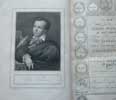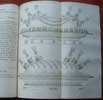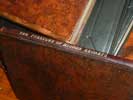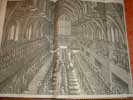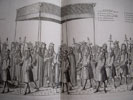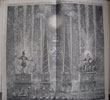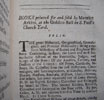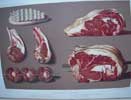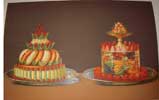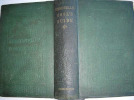LA MAISON
The History of Prunier's (small printer's device) MADAME PRUNIER (A small oval line device of a sailing ship with the date 1724) LONGMANS, GREEN AND CO LONDON.NEW YORK.TORONTO
FIRST EDITION 1957. 2feps, one page with the signature of MADAME PRUNIER and dated 26/6/57. Half Title. [1] Title page.[1] Dedication To my Father. [1] vii-viii Contents. ix-x Plates. 1+2-293. [1] 295-298 Index. 2feps. With 23 plates and four illustrations in the text, as called for. With the original dark green buckram with a gilt lettered label. With the original d/w illustrated by Toune in perfect condition. Also enclosed is a letter of reference, signed by MADAME PRUNIER and dated Nov.10th 1942. The reference is for M. Adolphe Cadier. (Cadier is also mentioned on page 254 of the book) There is also a copy of a letter addressed to M.Cadier from Auguste Escoffier, the famous Chef de Cuisine of the Carlton Hotel. Pall Mall. Also enclosed is a photo of M.Cadier and a wonderful small menu card from Maison Prunier. 9 Rue Duphot, Paris. All in excellent condition.
- La Maison Prunier has a wonderful culinary genealogy -- the recipes of the great Emile Prunier, of the renowned eponymous fish restaurant in Paris, were written and published in 1938 under the title 'Madame Prunier's Fish Cookery Book' The task was taken up by Emile's chef Michel Bouzy and published with the endorsement of his friend, the famous chef Auguste Escoffier. It was translated into English under the direction of Prunier's daughter Simone (author of this book) who opened a branch of Prunier's in 1934 at St. James, London W1. Prunier's hosted many of the world's famous personalities including Russian Grand Dukes, European Royalty, Sarah Bernhardt, Colette, Hemingway, Cesar Frank, Oscar Wilde and Clemenceau et al. River and lake fish including all available saltwater and shellfish were used as the signature dishes of Prunier; always the very finest and freshest. This book is full of the delights of the great pre-war Prunier Restaurants. Legendary dishes like 'Sole Prunier' with mushrooms and truffle in a Sauce Vin Blanc, Turbot Kedgeree, Oyster Souffle, Wonderful Fish Soups to start with and Prunier's famed Chocolate Creams to finish memorable meals. The glory of the book is the classic French fish repertoire, described here at its very best. At its peak and in its time, Prunier's had a reputation unequaled by any other establishment including Restaurant Boulestien and Quaqlinos. This book is a window back into a simpler and grander time, and especially Madame Prunier's diplomacy, care for customers and staff, and above all her drive to maintain the highest possible standards in peacetime and war. A wonderful item especially with the two signatures of Madame Prunier and the unusual items of ephemera. A very interesting read.

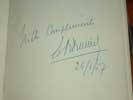
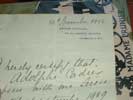

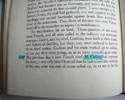
click on image to enlarge

Modern category
ref number:
11019 










